Posted by Elena del Valle on February 11, 2009

Photo: brickartist.com
Although no one knows for sure who was the original Valentine, many believe it was a clergyman who was executed for secretly marrying couples in ancient Rome during a marriage ban imposed by Emperor Claudius II, who felt that marriage weakened his soldiers. In A.D. 496, Pope Gelasius I declared February 14 Valentine Day. Over time, the Christian holiday became a time to exchange love messages, and St. Valentine became the patron saint of lovers. In the 1840s, Esther Howland, a native of Massachusetts, is believed to be the first person to sell mass-produced valentine cards.
On the business side of Valentine there are many advantages to the holiday. In 2006, there were 1,170 locations employing 39,457 people producing chocolate and cocoa products in the United States. California with 128 was the number one chocolate producer followed by Pennsylvania with 116. That same year, there were 473 companies that produced nonchocolate confectionary products. These establishments employed 18,733 people.
Looking at the sales side of things in 2006, there were $13.9 billion shipments for firms producing chocolate and cocoa products and $7.2 billion shipments of nonchocolate confectionery products produced by 3,563 confectionery and nut stores in the United States. On average Americans consumed 24.5 pounds of candy per person in 2007.
On the florist side of things, there were 20,227 flower shops in the country in 2006 employing 98,373 people. At the same time, the wholesale value of domestically produced cut flowers in 2007 (for flower-producing operations with $100,000 or more in sales) was $416 million. California was the leading producer, accounting for three-quarters of the total ($320 million).
For a longer lasting memory jewelry may be the answer. There are 1,777 jewelry manufacturing establishments in the country. In 2006, there were 28,300 jewelry stores in the United States. In February 2008, these stores sold $2.6 billion in merchandise.
Who says marriage is going out of style? In 2007, there were 2.2 million marriages or about a little more than 6,000 weddings a day. Nevada alone performed 126,354 that year.
Those who aren’t getting married are looking for love. In 2002, there were 904 dating service establishments nationwide employing nearly 4,300 people and earning $489 million in revenue.
According to the U.S. Census Bureau, 57 percent of women and 60 percent of men in America are 18 or older and married (including those who are separated). On a more sobering note, most marriages in the United States only last eight years. The median number of years between a divorce and a second marriage is 3.5.
“Moving Beyond Traditional Media Measurement: measuring conversations and social media” audio recording

Presenter Katie Delahaye Paine, founder, KDPaine & Partners
Find out about
- Issues affecting online public relationships today
- Testing relationships as part of a survey
- Measuring ethnic group relationships
- Measuring foreign language communications in a similar ways to English
- Biggest challenges measuring conversations and social media
- Measuring online relationships with little or no money
Click here for information on “Moving Beyond Traditional Media Measurement”
Posted by Elena del Valle on February 10, 2009
Information provided by our Event Partner

March 31 * Las Vegas Convention Center
Where the Wireless, Entertainment and Advertising Industries Connect!
Mobile Entertainment Live! is the nexus of three industries on a collision course to dramatically change the future of the media market – the wireless industry, the entertainment industry and the advertising industry.
Guided by Billboard’s editorial team, this one-day conference – the official mobile entertainment event of CTIA – will bring together the leading thinkers in each field to discover how all three can work together to create the content that people want to see, at the right price, and in the right way!
Register today for only $449. That’s a $50 savings!
Use promo code to register: PAPROM • Offer ends February 25
http://www.billboardevents.com/billboardevents/melivespring/registration/index.jsp
Posted by Elena del Valle on February 9, 2009
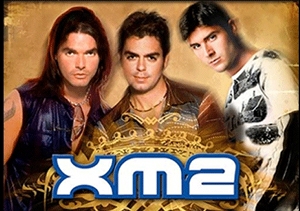
XM2 Group
Photo: Spanish Broadcasting System
In April, Mega TV, part of Spanish Broadcasting System (SBS), and Worldvibe Entertainment will broadcast Batalla de las Américas, a new prime time musical reality show to find the newest member of the XM2 Group. As part of the process in late January, Mega TV invited men singers between 18 and 30 years old from Miami, Los Angeles, New York and Puerto Rico to compete to represent the United States, including Puerto Rico, in the grand finale.
Auditions were held in Miami, New York and Los Angeles earlier this year. The representative from Puerto Rico, selected at the SBS studios at Guaynabo in late February, will compete in the final event in April 2009 in Miami.
During the grand finale of the musical competition in South Florida Thursday, March 19, 2009 the four semi-finalists from Miami will compete against the four semi-finalists from Los Angeles and New York.
Batalla de las Américas, expected to have 20 contestants from 15 countries competing in originality, creativity, heart and talent, was created to be similar to Making the Band, another reality program in English. XM2 Group members are Rawy Torres, Jonathan Montenegro and Sergio Blass.
Spanish Broadcasting System, Inc. is one of the largest publicly traded Hispanic-controlled media and entertainment companies in the United States. SBS owns and operates 20 radio stations located in Hispanic markets such as New York, Los Angeles, Miami, Chicago, San Francisco and Puerto Rico. The Company also owns and operates Mega TV in Miami. WorldVibe Entertainment is an entertainment company specializing in television production, touring, merchandising and tech marketing to Hispanics in North America as well as audiences in Latin America for television, film, music, tours, events and video products.
“Marketing to Multicultural Kids” audio recording
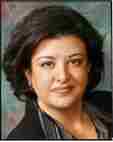
Michele Valdovinos gives a presentation and participates in an extended Q&A discussion about multicultural children based on a Phoenix Multicultural and Nickelodeon study of 1,300 multicultural children in 16 United States markets.
Find out about
• The Phoenix Multicultural Kids Study
• Relationship between children and their context
• Issues relating to family, technology and media, diversity, buying power, relationships in household, self perception, values, acculturation, cultural heritage, frequency of media activity, income and spending, brand preferences, the American Dream
• How many billions of dollars buying power multicultural kids children have
• Children’s spending attitudes, habits by ethnicity
• How much money a year Hispanic kids have available to spend
• Types of products Hispanic kids buy
Click here for information on “Marketing to Multicultural Kids” audio recording
Posted by Elena del Valle on February 6, 2009
Information provided by our Event Partner

April 19-23, 2009 * Eden Roc, A Renaissance Beach Resort & Spa * Miami Beach, Florida
Bringing together over 1,000 powerful music executives, artists, composers, sponsors and press, it features four full days of programming, showcases, educational sessions, parties and networking events. Week highlights include the Billboard Bash, a pre-awards extravaganza featuring live performances by top acts, and the annual Star Q&A, an intimate one-one interview conducted by Billboard’s executive director of Latin content, Leila Cobo.
The week is capped off by the longest running, most prestigious awards show in the music industry, The Billboard Latin Music Awards, which honors the biggest and brightest stars in the industry. From the dazzling red carpet to stunning performances by the NO. 1 artists on the charts, this is “the” Latin music award show that truly reflects the best in the marketplace.
The Billboard Latin Music Conference & Awards is part of Billboard’s long-standing editorial commitment to Latin music coverage. Billboard magazine publishes weekly charts and a expanded weekly Latin music section as well as special stand sections 4 times a year which provides even more in-depth coverage.
Register today for only $549. That’s a $150 savings!
www.billboardlatinconference.com
Posted by Elena del Valle on February 6, 2009

The 130-page Who’s Buying Executive Summary of Household Spending Third Edition (New Strategist, $59.95) features concise data on buying across the country for 2005. The paperback book includes information on consumer spending patterns by age, race and ethnicity, household type, and region.
The source of the information is the Consumer Expenditure Survey of the Bureau of Labor Statistics, a national survey of household spending. There are indexed spending figures illustrating what households spend on many products and services, and whether the households expenditures in a segment are higher or lower than the average for all households in that segment and by how much. The indexed spending tables, based on the average figures, were produced by the publisher’s staff.
The book lists data for 2005 as follows: Spending by Age, Spending by Income, Spending by High-Income Consumer Units, Spending by Age and Income, Spending by Household Type, Spending by Household Type and Age, Spending by Region, Spending by Region and Income, Spending by Metropolitan Area, Spending by Race and Hispanic Origin, Spending by Education, Spending by Household Size, Spending by Homeowners and Renters, Spending by Number of Earners, and Spending by Occupation.
New Strategist is a New York publishing company. Other titles published by the company include Household Spending, Who’s Buying for Travel, Who’s Buying Apparel, Who’s Buying Health Care, Who’s Buying Household Furnishings, Services and Supplies, Who’s Buying for Pets, Who’s Buying by Race and Hispanic Origin, Who’s Buying at Restaurants and Carry-Outs, Who’s Buying Transportation, Who’s Buying Groceries, Who’s Buying Entertainment, Who’s Buying by Age and Who We are Hispanic.

Click here to buy Who’s Buying Executive Summary of Household Spending
Posted by Elena del Valle on February 4, 2009
5 Ways Hispanic Business Owners Can Boost Sales with Promotional Products
By Julius Rosen
CEO, Best Logo Products

Let’s face it. In today’s world, people are bombarded with advertising so it can be hard to market your business effectively. Promotional products offer a unique and affordable way for Hispanic business owners to get their name out to potential customers without being obvious.
Promotional products range from pens to totes to key chains, all with your company’s name and contact information imprinted on them. Here are 5 ways Hispanic business owners can boost sales with promotional products.
Click here to read the complete article
“Segmentation by Level of Acculturation” audio recording

Presenter Miguel Gomez Winebrenner
Discusses
- Assimilation versus acculturation
- Factors that affect Latino acculturation
- How to know if someone is acculturated
- Number of years necessary for acculturation
- Effects of immigration debate on acculturation
- Three main ways of segmenting Latinos
Click here for details about “Segmentation by Level of Acculturation”
Posted by Elena del Valle on February 2, 2009
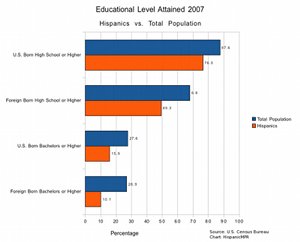
Educational Level Hispanic vs. U.S. Total Population 2007 – click on image
When it comes to advanced degrees foreign-born residents exceed native-born residents, according to a U.S. Census Bureau report released last week. In 2007, more foreign born people living in the United States had master’s degree or higher than native-born residents. Nationally, 11 percent of people born in another country who lived in the United States and 10 percent of U.S.-born residents had an advanced degree.
That same year, 84 percent of adults 25 and older said they had at least a high school diploma and 27 percent claimed to have a bachelor’s degree or higher. At the same time, across the whole country a smaller percentage of foreign-born than native-born adults had completed at least a high school education. Only 49 percent of foreign-born Latinos said they had graduated from high school while 49 percent of Asians indicated they had graduated from college or higher.
While 87.7 percent of U.S.-born residents said they had a high school diploma only 76.5 percent of U.S.-born Latinos graduated from high school; 68 percent of foreign-born residents had a high school diploma and 49 percent of foreign born Latinos had graduated from high school. Undergraduate degrees were less common. Some 27.6 percent of U.S.-born residents said they had a bachelor’s degree or higher and 15.9 percent of U.S.-born Latinos had a bachelor’s degree or higher. Just over one quarter of foreign-born residents (26.9 percent) claimed a bachelor’s degree or higher while 10 percent of foreign born Latinos had such degrees.
In the West, the percentage of foreign-born who had completed at least a bachelor’s degree or higher was less than the percentage of the native-born, 24 percent compared with 31 percent respectively. In the Northeast, both groups had 32 percent with bachelor’s degrees or more. The foreign-born in the South (26 percent) and Midwest (31 percent) were more likely than native-born residents to have at least a college degree (25 percent and 26 percent, respectively).
The report also indicates that: 84 percent of adults 25 and older had completed high school, while 27 percent had obtained at least a bachelor’s degree in 2007; a larger proportion of women (85 percent) than men (84 percent) had completed high school; a larger proportion of men had earned a bachelor’s degree (28 percent compared with 27 percent); the percentage of high school graduates was highest in the Midwest (87 percent), and the percentage of college graduates was highest in the Northeast (32 percent).
Also, men earned more than women at each level of educational attainment. The percentage of female-to-male earnings among year-round, full-time workers 25 and older was 77 percent; workers with a bachelor’s degree on average earned about $20,000 more a year ($46,805) than workers with a high school diploma ($26,894). Hispanic and black workers earned less at all levels than non-Hispanic whites and Asians.
The information in the report is from Educational Attainment in the United States: 2007, a report that describes the degree or level of school completed by adults 25 and older. This data stands out because it’s the first Census Bureau report on educational attainment to use data from the Current Population Survey and the American Community Survey. Researchers point out that combining the two data sets provides a state-by state comparison of educational attainment while providing an examination of historical trends.
Target Latinos effectively by anticipating changes in the market with
“Hispanic Projections with 2007-08 update” audio recording

Presenter Roger Selbert, Ph.D.
Find out
- About Latino buying power growth in the future
- How Latino market growth compares with other markets in the U.S.
- What drives the rise of Latino economic clout
- Who should target the Latino market
- What is the size of the Hispanic affluent market
- If the luxury Latino market is growing
Stay ahead of your competition with “Hispanic Projections”
Posted by Elena del Valle on January 30, 2009
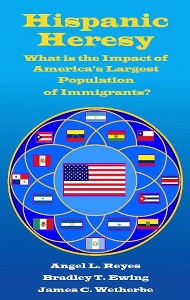
Hispanic Heresy: What is the Impact of America’s Largest Population of Immigrants? book cover
Photos: Mead Publishing
In Hispanic Heresy: What is the Impact of America’s Largest Population of Immigrants? (Mead Publishing, $25), Angel L. Reyes, III, MBA, J.D., Bradley T. Ewing, Ph.D. and James C. Wetherbe, an attorney and two university professors respectively, address the impact of Latino immigration on the United States.
The 104-page newly published hardcover book is divided into seven chapters: Hispanic Forest Among American Trees; ¿Habla Ingles? Myth of a Bilingual America; Employment: Would You Become an Illegal Alien If You Could Increase Your Income 7 to 1?; Education: The Critical Equalizer; Politics and Justice for Hispanics in America; The Economic Impact of Hispanic Consumers; and Hispanic Immigration: Profile Tributes to Hispanics.
The three men set out to provide an overview of the immigration of Latinos to the United States. They address employment, educational challenges, politics, judicial system, and economic impact. The book ends with a profile and tribute to a small group of Hispanic immigrants they deemed noteworthy.
They wrote Hispanic Heresy to dispel the misunderstanding about the impact of Hispanics on American socio-economics. The authors point out that the significant growth of the Hispanic population in the United States is the result of immigration and a high birthrate among Latinos.
They believe that this demographic shift in the country can be interpreted as a problem or as an opportunity. Illegal immigration can strain the educational, social welfare, employment and medical care systems if income taxes go uncollected, they say. On the other hand, historically immigrants have been willing to take on entry level jobs and work their way up to achieve the American dream.
The authors, who have differing political perspectives, debated the issues while writing the book in order to express bi-partisan views and achieve compromise. In the end, they concluded that Hispanic immigration is beneficial for the country and “an opportunity that America must deftly handle if it is to continue to lead the world and truly be the land of opportunity.”
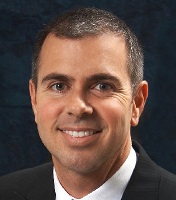
Angel L. Reyes, III, MBA, J.D., founder, Heygood, Orr, Reyes, Pearson & Bartolomei
Reyes, III is the founder and managing partner of Heygood, Orr, Reyes, Pearson & Bartolomei, a Dallas law firm. A graduate of the University of Michigan Law School, he started his legal career on Wall Street before moving to Texas. He also received an MBA (Master’s in Business Administration) degree from Texas Tech University. He has appeared on Lou Dobbs Tonight on CNN, CBS-KTVT and on Court TV’s national satellite radio channel.

Bradley T. Ewing, Ph.D., professor, Texas Tech University
Ewing is the Jerry S. Rawls Professor in Operations Management at Texas Tech University. He is a founding partner of the Ph.D. Resource Group, L.L.C., and serves as a consultant and expert witness for law firms and businesses on intellectual property, business valuation, employment and economic losses issues. He is the editor of the Journal of Business Valuation and Economic Loss Analysis. Ewing, who received his doctoral degree from Purdue University, is the author of two economics books and 100 academic articles. He is co-director of the Center for Professional Development/Management and Executive Education at Rawls College of Business.

James C. Wetherbe, professor, Texas Tech University
Wetherbe is the Stevenson Chaired Professor in the Rawls College of Business at Texas Tech University. Author of 26 books, he likes to explain complex topics in “straightforward, practical terms that can be understood and applied by executives and general management.” He has developed and conducted executive education programs for thousands of people.

Click here to buy a copy of Hispanic Heresy
Posted by Elena del Valle on January 28, 2009

At the beginning of 2008, there were 112.8 million households including 12.1 million Latino homes, in the United States. At the same time that the Latino population has grown, television penetration in Hispanic households has increased from 8.7 million in 1991 to almost 10.8 percent in 2008.
Since much of the overall growth of the country, especially in youth markets, is from Latinos much of the overall growth in television audience, it follows, is in the Latino market segments. According to the Hispanic Marketers’ Guide to Cable 2008 Edition, Hispanic households grew 35.7 percent between 2004 (10.5 million) and 2008 (12.1 million), accounting for almost all the population growth during that time period.
When it comes to language of the viewer, opinions vary. The Guide, relying on Nielsen data (some researchers have objected to Nielsen numbers in the past as reflecting an insufficient number U.S.-born Latinos), indicates 43 percent of television watching Latinos are Spanish dominant (their main language is Spanish); 34 percent are English dominant (their main language is English); and 23 percent are bilingual.
Nearly 60 percent of adult Latinos are Spanish dominant, according to the data in the 192-page book published by Cabletelevision Advertising Bureau. It lists 11 ad-supported networks offering content for Latinos: CNN en Español, Discovery en Español, Discovery Familia, ESPN Deportes, Fox Sports en Español, Galavision, GolTV, MTV Tr3s, Mun2, Si TV, and Sorpresa.
“Moving Beyond Traditional Media Measurement: measuring conversations and social media” audio recording

Presenter Katie Delahaye Paine, founder, KDPaine & Partners
Find out about
- Issues affecting online public relationships today
- Testing relationships as part of a survey
- Measuring ethnic group relationships
- Measuring foreign language communications in a similar ways to English
- Biggest challenges measuring conversations and social media
- Measuring online relationships with little or no money
Click here for information on “Moving Beyond Traditional Media Measurement”
According to a 2006 Encuesta study, 57 percent of foreign-born Hispanics watch TV in English and 73 percent of U.S.-born Hispanics watch some Spanish language programs. Only 12 percent of the TV viewers they surveyed said they watched television in English only and 31 percent said they watch television in Spanish only. Sixty-eight percent of respondents said their preferred programs covered news and political issues while 43 percent said they like to watch telenovelas (Spanish language programs similar to soap operas) in English (5.9 hours) and Spanish (7.2 hours).
The study, part of the Americanos Poll series, explored the television viewing habits of Hispanics, including time spent watching specific program formats. Participants also shared opinions on 13 English- and Spanish-language television networks and on programming in each language.
At the same time, recent statistics indicate America’s most popular shows for viewers aged 18 to 34, considered by many among the most elusive and desired demographic for advertisers, are Fuego en la Sangre (Fire in the Blood) and Cuidado Con el Angel (Don’t Mess with the Angel), broadcast by Univision, one of the most viewed networks in the United States and possibly the most viewed Spanish-language television network in the country.
More than ever marketing and advertising executives are paying attention to the booming Latino demographic in light of increasing evidence of that market segment’s growth, especially among the country’s youth. Data recently released by Univision indicates that its ratings on Wednesday and Friday nights are higher than those of the big four English-language networks, CBS, ABC, NBC and Fox.
In terms of programing and contrary to the Encuesta survey findings, the majority of the successful with the audience Spanish-language television programs are soap operas imported from Latin America. Examples include Sin Tetas No Hay Paraíso (Without Breasts There Is No Paradise) and Las Tontas No Van al Cielo (Dumb Girls Don’t Go to Heaven), imported from Mexico and Colombia.
Miami-based Encuesta, Inc. is a U.S. Hispanic marketing research and public opinion polling firm that provides customized research, objective analysis, and insights to reach the Hispanic community. Founded in 1980, the Cabletelevision Advertising Bureau is a cable television advertising advocacy group dedicated to providing advertisers media insights.
Hispanic Marketing and Public Relations Understanding and Targeting America’s Largest Minority book
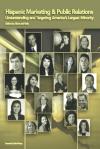
“A must resource for practitioners/professionals expecting to reach US Hispanics; also valuable for college programs in marketing, public relations and communications. Highly recommended.”
Choice magazine
Click here for information on the Hispanic Marketing & Public Relations book
Posted by Elena del Valle on January 26, 2009
Information provided by our Event Partner

Interactive Media Conference & Tradeshow
Real Results For A Lean Economy
www.interactivemediaconference.com
May 6-7, 2009
Astor Crowne Plaza – New Orleans, LA
If you attend only one industry event in 2009, it should be the 20th Annual Interactive Media Conference & Tradeshow. This year’s meeting will focus on real results for a lean economy.
Here is what you will gain from attending:
• Valuable success stories and case studies
• Learn about the challenges being faced on the both sides—business and editorial
• Hear how your peers at newspapers, television, magazines, radio and web-only outlets are reorganizing and refocusing their efforts for these lean times
• Network with and learn from your colleagues and competitors about what works and what doesn’t
• Above all, you’ll be challenged into new ways of thinking in today’s new economy
Plus, Don’t Miss!
• The 14th Annual EPpy Awards, showcasing the best media company Web sites and new-media applications today
• Our annual Trade Show including the leading technology companies and service providers who are eager to help your newsroom and business succeed in a challenging environment.
Join more than 350 media executives, decision-makers, sales managers, publishers, and editors from media web sites for a rare opportunity to jointly discuss our common struggles and triumphs in new media. It’s an incredibly difficult environment, but you’re not alone. And, we’re here to help.
To Register visit
http://www.editorandpublisher.com/eandp/imc/registration-info.jsp
HMPR Readers and Subscribers save $345 off Full Price on any new registration!
Use Promo Code: HMPR650
Reserve your room today at the Astor Crowne Plaza for $197 per night (single or double). Make your online reservation.





























